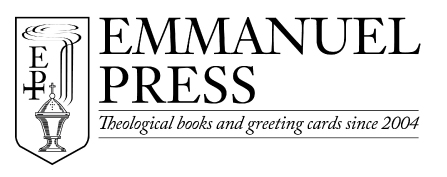Now available for pre-order: The Great Works of God: Leviticus
 Originally written in German by 17th-century Lutheran pastor Valerius Herberger, The Great Works of God, Part Seven: The Mysteries of Christ in the Book of Leviticus, is now available in English. The third book of Moses, commonly called Leviticus, outlines the ceremonial law set forth by God for His people. Newly rescued from slavery in Egypt, the Israelites stood before Mount Sinai to receive instruction on how a sinful people approach a holy God. In these 70 devotional meditations, Valerius Herberger presents a Christological interpretation of Leviticus, focusing on the Christian understanding of holiness. Translator Matthew Carver captures the wisdom and wit of Herberger’s insightful writing which always keeps Jesus Christ front and center and often blurs the line between commentary and sermon. Both preachers and laymen alike will find this volume helpful in interpreting the Scriptures and beneficial in learning how to live a life that bears much fruit.
Originally written in German by 17th-century Lutheran pastor Valerius Herberger, The Great Works of God, Part Seven: The Mysteries of Christ in the Book of Leviticus, is now available in English. The third book of Moses, commonly called Leviticus, outlines the ceremonial law set forth by God for His people. Newly rescued from slavery in Egypt, the Israelites stood before Mount Sinai to receive instruction on how a sinful people approach a holy God. In these 70 devotional meditations, Valerius Herberger presents a Christological interpretation of Leviticus, focusing on the Christian understanding of holiness. Translator Matthew Carver captures the wisdom and wit of Herberger’s insightful writing which always keeps Jesus Christ front and center and often blurs the line between commentary and sermon. Both preachers and laymen alike will find this volume helpful in interpreting the Scriptures and beneficial in learning how to live a life that bears much fruit.
As Carver notes, Herberger “writes mainly for the average educated layperson, with a very personal style. He mostly avoids technical or theological jargon and offers interesting insights….It is useful as a devotional since nothing exactly like this exists today.” Furthermore, Carver explains the book’s wide appeal: “It can be used theologically for perspectives on biblical interpretation and typology, devotionally for personal spiritual enrichment, and homiletically as an example of historical models of applying interpretation.”
Pre-order your copy today!
*Leading up to the book’s release in mid-April 2024, we’ll be posting more details and excerpts. See the right sidebar to sign up for emails or Like us on Facebook to keep updated.
The Altar: An Excerpt from Ceremony and Celebration
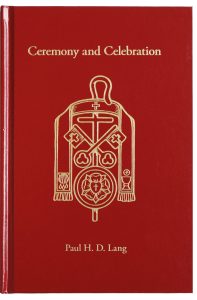 “Long before churches were built, the church’s worship was carried out at or around an altar. In Gen. 8:20 we read that ‘Noah builded an altar unto the Lord.’ Even before that, ‘Cain brought of the fruits of the ground an offering unto the Lord. And Abel brought of the firstlings of his flock and of the fat thereof’ (Gen. 4:3, 4). These sacrifices must have been offered on an altar. Therefore, the altar was the place of worship before there were church buildings, and the altar is more than an ornament or piece of furnishing in a church. It is a monument or object around which and in which the church’s worship is centered.
“Long before churches were built, the church’s worship was carried out at or around an altar. In Gen. 8:20 we read that ‘Noah builded an altar unto the Lord.’ Even before that, ‘Cain brought of the fruits of the ground an offering unto the Lord. And Abel brought of the firstlings of his flock and of the fat thereof’ (Gen. 4:3, 4). These sacrifices must have been offered on an altar. Therefore, the altar was the place of worship before there were church buildings, and the altar is more than an ornament or piece of furnishing in a church. It is a monument or object around which and in which the church’s worship is centered.
“We may regard the altar as: 1. the Lord’s table, 2. an emblem of sacrifice, and 3. a symbol of God’s presence.
“In one of its aspects the Holy Communion Service is a fellowship meal in which we are united with Christ and all fellow believers in a holy union or communion. As such it is celebrated at a table. This table is the altar, which for that reason is called the Lord’s table (1. Cor. 10:21).
“The altar is also an emblem of sacrifice. The word altar itself indicates this. It comes from the Latin altare ara, which means an elevated place for sacrifice. In the church’s worship the altar represents by association Christ’s sacrifice of Himself for the redemption of the world, and the place where the benefits of this sacrifice and all the blessings of God are conveyed to the believers. But the sacrificial aspect of the altar does not end there. It is the monument on which we offer in response to God’s mercy our sacrifices to God, that is, our sacrifices of prayer, praise, thanksgiving, and such material tokens of the offering of ourselves with all we are and have as money, bread, and wine.
“Thirdly, the altar is a symbol of God’s presence. It symbolizes the place where God and His people meet. Our Lord Himself refers to the altar as a symbol of God in Matt. 5:23 and 23:18-20. The altar stands for God as our flag stands for our country. That is why we direct our worship to the altar and reverence it by bowing, genuflecting, and kneeling. That is also the reason why the altar itself, and not any of its surroundings or ornaments, such as crucifixes, reredos, pulpit, or any other object, is in matter of location and all other considerations the focal point and center of the church’s worship and the church building.”
-Paul H.D. Lang in Ceremony and Celebration
Thy Kingdom Come: An Excerpt from Septuagesima
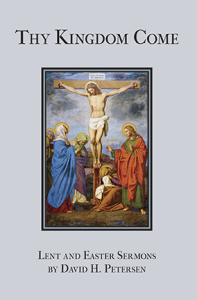 “The main point of the parable is that entrance into the kingdom comes by grace. The workers are rewarded for work they did not perform. This is hardly a surprise to us; in fact, we practically expect it.
“The main point of the parable is that entrance into the kingdom comes by grace. The workers are rewarded for work they did not perform. This is hardly a surprise to us; in fact, we practically expect it.
“G.K. Chesterton once said, ‘Do not be proud of the fact that your grandmother was shocked at something which you are accustomed to seeing or hearing without being shocked…It may be that your grandmother was an extremely lively and vital animal and that you are a paralytic.’
“Chesterton has in mind immoral things. He means, ‘Don’t think you are more sophisticated than your grandmother because you watch television shows full of vulgarities and aren’t bothered by them. It could be that she was highly intelligent and sensitive and you have been paralyzed by evil so much that you don’t even notice it.’
“The same sort of numbness applies to the Gospel as well. I fear that it is even worse. We’re not just numb, but we’ve crossed over the line drawn by Bonhoeffer into ‘cheap grace.’ I fear we’re now guilty of thinking grace is worse than cheap; it is a right, an entitlement, as though God owed us salvation. Repent.”
–These are the first 4 paragraphs from the sermon for Septuagesima, based on Matthew 20:1-16. Find Thy Kingdom Come here.
Save on EVERYTHING during our 4-day Thanksgiving sale!
Looking for Christmas cards, Christmas gifts, or a little something for yourself? Starting today, save up to 20% on all books and cards. Prices are valid through Saturday, November 25, which happens to be Small Business Saturday. Browse our selection of titles using the Books tab above.
 A few highlights:
A few highlights:
*Share the joy of Christ’s birth with your family and friends with our stunning Christmas cards. Each one pairs beautiful artwork with the words of Scripture or the timeless poetry of hymns. “Messiah” is pictured here.
*God With Us by David H. Petersen is a collection of brief sermons that are perfect for personal devotion. Pr. Petersen explains how Christ’s incarnation is the basis of all Christian preaching and the essence of every celebration of the Lord’s Supper and Baptism, every proclamation of Absolution to repentant sinners.
*The Great Works of God: The Mysteries of Christ in the Book of Exodus contains more than 120 Christocentric, devotional meditations in which Valerius Herberger shows his fervent belief that Jesus Christ is the center of every part of Scripture. Matthew Carver’s translation of this work is outstanding.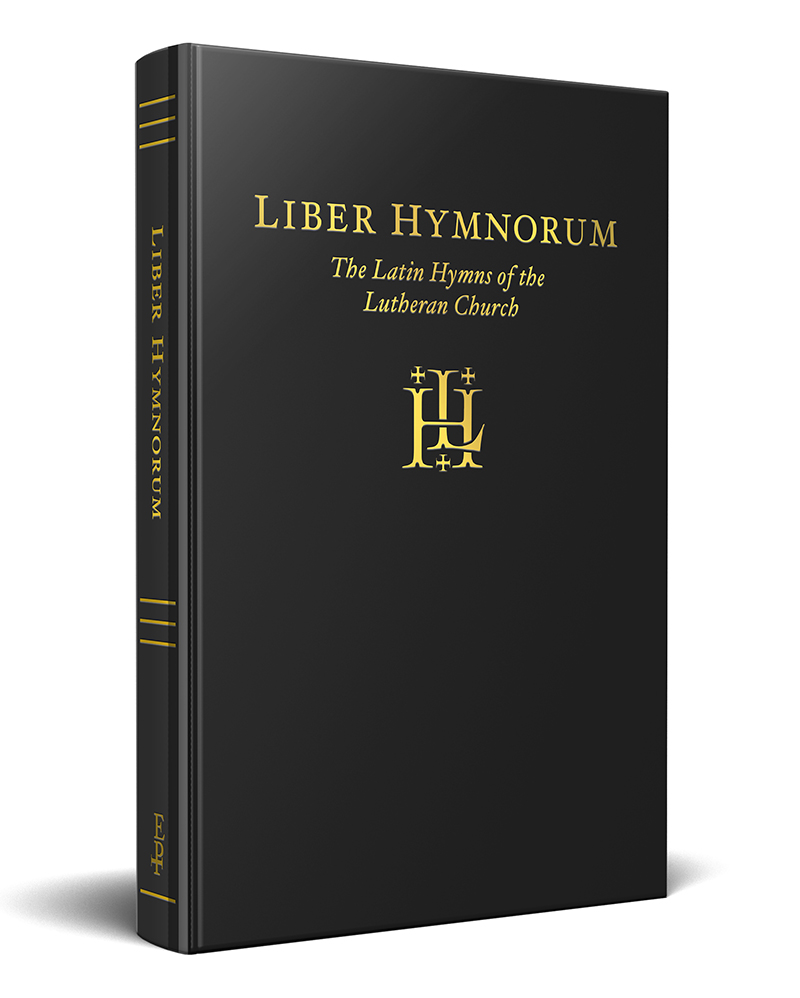
*Wherever you fall on the spectrum of Latin — a scholar, a teacher or student of classical education, or a novice — you will find Liber Hymnorum: The Latin Hymns of the Lutheran Church to be an absolute treasure. Liber Hymnorum is two hymnals in one, the first half being English, the second Latin, exactly mirroring the first half in content and numbering.
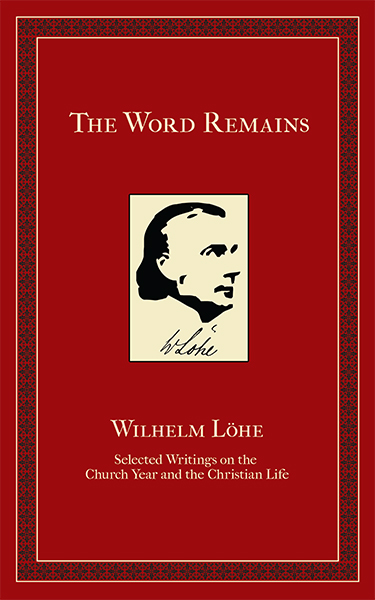 *In The Word Remains, Wilhelm Löhe gives insight into the confessional Lutheran understanding of the church year, the Word of God, and matters related to the Christian life. Readings begin with Advent, the start of the Church Year.
*In The Word Remains, Wilhelm Löhe gives insight into the confessional Lutheran understanding of the church year, the Word of God, and matters related to the Christian life. Readings begin with Advent, the start of the Church Year.
*What an Altar Guild Should Know gives details about church services, rubrics, altar care, sacred vessels, and other topics related to liturgical worship. However, anyone who is interested in liturgical worship will appreciate Lang’s keen theological insight into why reverence and beauty and the externals of worship matter.
A blessed Thanksgiving to you!
Introducing our newest Christmas card…God Most High
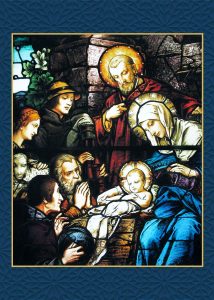 This year we are pleased to add a new Christmas card to our collection: God Most High. Here the holy family is depicted in stunning stained glass, gathered together with shepherds in adoration of the Christ child. The inside text is Stanza 3 of Martin Luther’s Christmas hymn, “From Heaven Above to Earth I Come”:
This year we are pleased to add a new Christmas card to our collection: God Most High. Here the holy family is depicted in stunning stained glass, gathered together with shepherds in adoration of the Christ child. The inside text is Stanza 3 of Martin Luther’s Christmas hymn, “From Heaven Above to Earth I Come”:
This is the Christ, our God Most High,
Who hears your sad and bitter cry;
He will Himself your Savior be
From all your sins to set you free.
Luther wrote the text of this hymn in 1534 as a sort of pageant or Christmas devotion for his own family. In fact, this particular stanza is addressed to the shepherds as part of “an extended paraphrase of the words of the angel from Luke 2:11–12. Luther goes beyond a simple retelling of the story to emphasize the great joy that comes from knowing that Jesus came ‘from all your sins to set you free,'” as Pr. W.H. Otto observes in a Lutheran Witness article from 2009. His entire article is worth reading to understand the hymn’s structure and how its writing was influenced by the 14th-century medieval folk tradition of the garland song.

Let’s stay in touch! To receive the most current information on our products and new releases, join our email list today!
